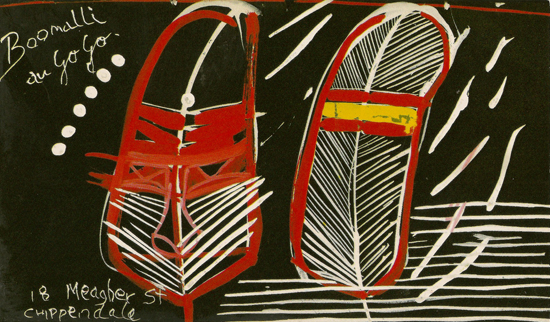From Carrie Miller…
From the perspective of today’s exploded Aboriginal art market, it’s hard to imagine that only a few decades ago work made by this country’s first inhabitants was largely ignored. When the mainstream art world did begin to take a serious interest in the work, the focus was on ‘traditional’ art produced in rural and remote areas; the work of urban-based Aboriginal artists was much more difficult to comprehend because it couldn’t be so readily reduced to the simplistic ideas of ‘authenticity’ and ‘spirituality’ that non-indigenous people liked to ascribe to dot paintings. As Aboriginal artist and activist Richard Bell put it in text on a work: Aboriginal Art – It’s A White Thing.
It was this sort of frustration with the co-option of the category ‘Aboriginal art’ by the white art market that led a group of urban Aboriginal artists to establish the Boomalli cooperative in 1987. The name means ‘to strike, to make a mark, to fight back, to light up’. It’s what these artists have done both collectively and individually since setting up the co-op. Tracey Moffatt, for example, has gone on to become perhaps Australia’s most successful and internationally recognised contemporary artist.
This current exhibition celebrates twenty five years since Boomalli was established and consists of work by the ten founders of the co-operative – one from then and one from now. This provides audiences with a pretty unique opportunity to see both the evolution of each artist’s practice and the diversity that was always in the work of Aboriginal artists.
The ten founders are Bronwyn Brancroft, Euphemia Bostock, Brenda L Croft, Fiona Foley, Fernanda Martins, Arone Raymond Meeks, Tracey Moffatt, Avril Quaill, Michael Riley, Jeffrey Samuels.
Until December 23
Boomalli, Leichhardt
Pic: Fern Martins, Avril Quail, Jeffrey Samuels, 1987. Produed for the Boomalli Au Goo Go exhibition.

